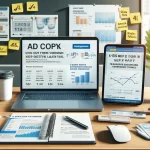
In traffic management, understanding and measuring the efficiency of your campaigns is crucial. By analyzing essential metrics, businesses can gauge whether their strategies are driving the desired results, such as increased website visits, higher rate of conversion, or better engagement. This article covers the core metrics every traffic manager should monitor to optimize performance and maximize return on investment (ROI).
Why Metrics Matter in Traffic Management
Metrics provide objective data that help businesses understand user behavior, campaign performance, and areas for improvement. By tracking specific metrics, you gain insights into what works and what doesn’t, enabling you to refine your strategies and allocate resources more effectively.
Key Metrics for Measuring Traffic Management Success
1. Click-Through Rate (CTR)
CTR is the ratio of users who click on an ad or link to the quantity of users who view it. A high CTR indicates that your ad or content is relevant and engaging for your audience.
Formula: (Clicks / Impressions) x 100
The reason it’s important: CTR helps you understand how well your content resonates with your audience. Low CTRs may indicate a need for better targeting or more compelling content.
2. Rate of conversion
Rate of conversion is the proportion of users who perform a desired action, such as completing a purchase, subscribing to a newsletter, or filling out a form.
Formula: (Conversions / Total Visitors) x 100
The reason it’s important: Rate of conversion reflects the efficiency of your landing pages, ad copy, and user experience. A high rate of conversion suggests that your traffic is well-targeted and your content matches the visitor expectations.
3. Exit Rate
Exit Rate is the proportion of users who leave a website after visiting just one page. The high exit Rate often indicates that the content on the landing page isn’t engaging or relevant to the user’s intent.
Formula: (Single-Page Sessions / Total Sessions) x 100
The reason it’s important: Monitoring exit Rate can reveal issues with your landing page quality, loading speed, or targeting accuracy. Optimizing your site to reduce exit Rates can lead to higher engagement and conversions.
4. Cost Per Click (CPC)
CPC measures the expense of each click in a paid traffic campaign. Keeping CPC within budget is essential for cost-effective traffic management.
Formula: Total Ad Spend / Total Clicks
The reason it’s important: CPC helps assess the financial efficiency of paid campaigns. Low CPCs allow you to reach more users within your budget, while high CPCs may indicate that adjustments are needed in targeting or bidding strategies.
5. CPA (Cost Per Acquisition)
CPA represents the expense of obtaining a customer or lead through a paid campaign. It’s a critical metric for businesses focused on conversion-based goals.
Formula: Total Ad Spend / Total Conversions
The reason it’s important: CPA offers understanding of the profitability of your campaigns. A CPA low reflects efficient spending, whereas an elevated CPA may require a review of ad targeting or creative content.
6. ROAS (Return on Ad Spend
ROAS evaluates the income produced from a paid campaign relative to the money spent. It’s a valuable metric for understanding the financial return on advertising efforts.
Formula: Revenue from Ads / Total Ad Spend
The reason it’s important: ROAS shows if your ad campaigns are financially sustainable. An elevated ROAS indicates a successful campaign, whereas A reduced ROAS suggests the requirement for improvement.
7. Typical session length
Typical session length is the duration of time users allocate to your website. This metric reflects user engagement and the quality of your content.
Formula: Total Duration of All Sessions / Total Sessions
The reason it’s important: Longer session durations indicate that users find your content valuable and engaging. Short sessions may imply that content needs improvement or that targeting isn’t reaching the right audience.
8. Pages viewed per session
Pages viewed per session measures the quantity of pages a user visits on average in one session. It reflects the depth of user engagement on your site.
Formula: Total Pageviews / Total Sessions
The reason it’s important: High pages viewed per session suggest that users are exploring your content. Low values may signal that your site navigation or content strategy needs improvement.
Tools for Tracking Traffic Management Metrics
1. Google Analytics
Google Analytics is a comprehensive tool that provides data on exit Rates, session duration, rate of conversion, and more. It’s essential for understanding user behavior and optimizing site performance.
2. Facebook Ads Manager
Facebook Ads Manager offers insights into CTR, CPC, CPA, and engagement metrics for campaigns run on Facebook and Instagram. This platform is ideal for tracking social media ad performance.
3. Google Ads
Google Ads provides detailed analytics on search and display ad campaigns, including CTR, CPC, and rate of conversion. It’s indispensable for paid search campaign management.
4. SEMrush and Ahrefs
These tools offer insights into organic traffic metrics, including keyword rankings, backlinks, and site audits. They are invaluable for understanding SEO performance and organic traffic trends.
5. Hotjar
Hotjar provides heatmaps and user recordings, showing how visitors interact with your website. This information helps identify areas for improving user experience and increasing engagement.
Best Practices for Using Metrics to Improve Traffic Management
1. Set Clear Goals and KPIs
Establishing key performance indicators (KPIs) for each campaign helps you track progress and identify success. Align your KPIs with your overall marketing goals, whether it’s brand awareness, lead generation, or sales.
2. Monitor Metrics Regularly
Regular monitoring helps you identify trends and make timely adjustments. For example, a sudden drop in CTR or an increase in exit Rate could indicate issues with your ad content or website.
3. Use A/B Testing
A/B testing allows you to compare different versions of ads, landing pages, or CTAs to determine which performs best. Testing can lead to higher CTRs, rate of conversion, and user engagement.
4. Continuously Optimize Based on Data
Data-driven optimization ensures that campaigns are continually improving. By adjusting targeting, budget, and ad content based on metric performance, you can maximize ROI and achieve better results.
Conclusion: Leveraging Metrics for Better Traffic Management
Tracking and analyzing metrics is a fundamental part of effective traffic management. By focusing on essential metrics like CTR, rate of conversion, and ROAS, businesses can refine their campaigns to meet goals more efficiently. Armed with insights from metrics, you can make informed decisions that lead to higher engagement, conversions, and overall campaign success.






